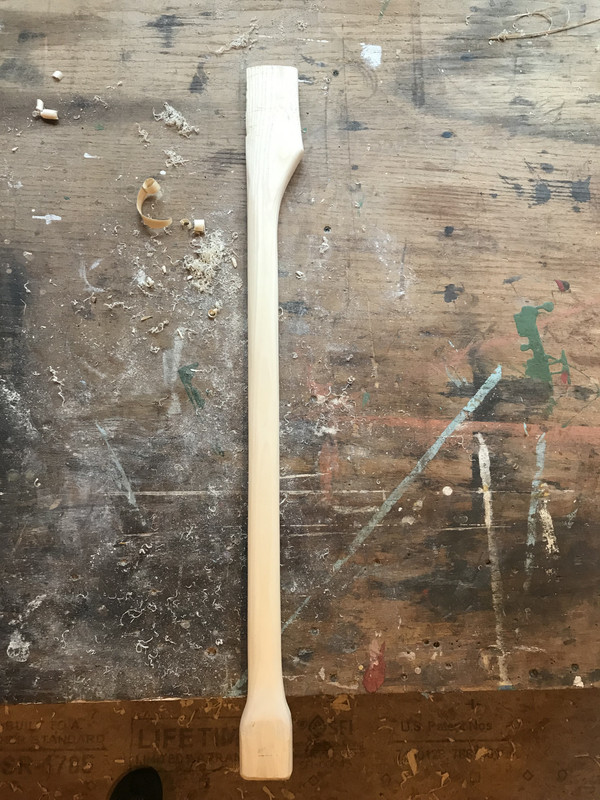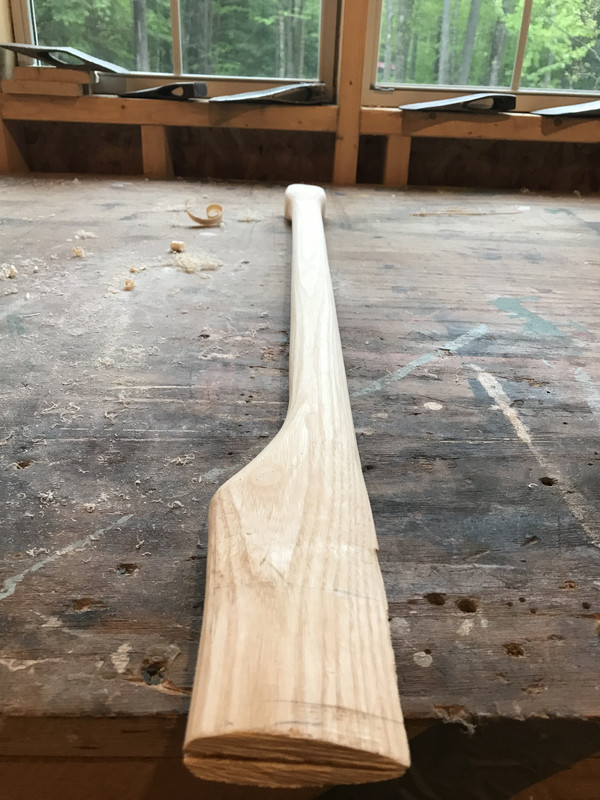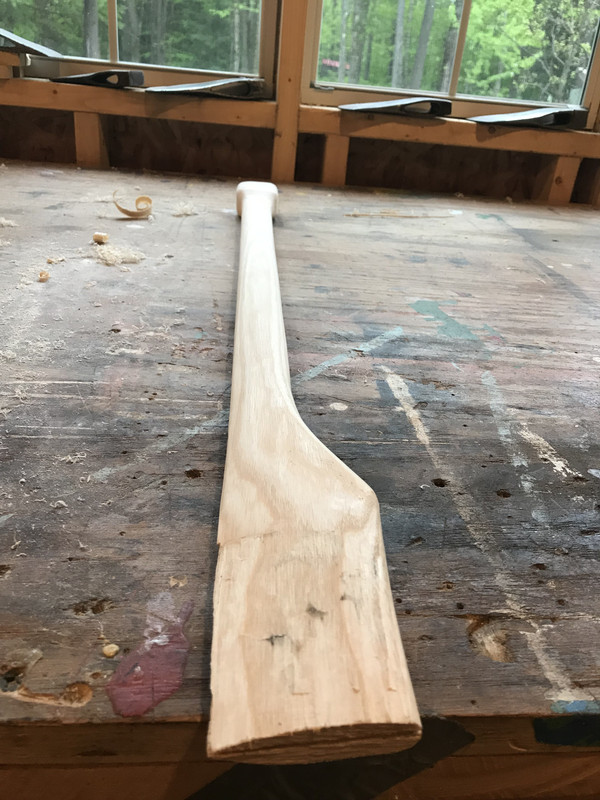- Joined
- Mar 31, 2018
- Messages
- 1,875
My poorly aimed strike with a 3lb rubber mallet.That's a shame, but stuff happens. What sheared it off?

The BladeForums.com 2024 Traditional Knife is available! Price is $250 ea (shipped within CONUS).
Order here: https://www.bladeforums.com/help/2024-traditional/
My poorly aimed strike with a 3lb rubber mallet.That's a shame, but stuff happens. What sheared it off?

Yankee Thor.My poorly aimed strike with a 3lb rubber mallet.









Beautiful work. I love those clamps.This is about a handle repair. In order to go this route a number of criteria have to be met because of my general attitude that a handle is a disposable thing and does not rate repairing. In this instance I weighed the following aspects:1- the handle is a unique example, 2- it is personalized with an intentional marking, 3- the mark identifies it as part of a group of four axes I have all with the same mark. Only the combination of attributes keeps the handle from getting replaced with a new made one.Once the decision to salvage is settled on and deemed feasible my strategy is to cut out the crack, surface and glue the joined pieces back together with no guarantee of success in the end and me still not totally convinced it was such a smart choice.

Only with 100% contact between the mating parts and sufficient clamping pressure can we speak of the glued joint surpassing the strength of the wood itself

so the saw marks have to be planed away and the joint tested for a perfect fit.
Because of the loss from the kerf the two pieces no longer align. Luckily there is a traditional technique of compensation when rehanging.

One thing working in my favor, the angle of the scarf is shallow providing a decent amount of contact surface.
It's left clamped over night.
Right side

Left side after touching up with matching stain.
It's a sketchy call and one reserved for the most exceptional cases but until now I have had good success in restoring functionality when the conditions are right.


Now, you need to buy Boy's size axe head for that haft.Well I had a less than stellar day today. I had been working on fitting a nice piece of ash to a Campbell's hammer poll head over the last few days, but the shape of the inside of the eye had been giving me trouble. It's hard to describe, but the back of the eye protrudes out in the middle and while fitting the head I got it majorly stuck. So unbelievably stuck that I considered using the axe as is without cutting a kerf and wedging.
Went to use someone's vise since I don't own one and had the hammer part of the head clamped in soft jaws. I beat away at it with a giant hornbeam mallet and it finally budged and eventually I had the handle out. Only to realize to my horror that the back of the handle had been resting on the bottom of the vise and while I beat it out it peeled up a huge splinter.
The piece of ash was already just big enough and there was barely going to be any shoulder at the back. I think this one has just become firewood.


Now, you need to buy Boy's size axe head for that haft.

Pretty clever thinking on sliding it up on the diagonal,to retain the dimensions of eye...I had to look at it for a while till i noticed what all you did...
Good idea,very well executed,i hope it lasts a long time.
It's almost pointless to judge things like that from a photo(even a good one,and yours usually are-it takes some hours for me to see them,with my reception speed.
It almost looks like beech?
The rings look rather thick....It was probably not the best arrangement/config.,by the original maker of this handle...I love that wide tongue,and overall shape(and beech as well),the maker probably didn't have access to a better piece of wood,like a crook of some sort...
Beautiful work. I love those clamps.


There are axes in North-East of Europe with very large eyes.(common presumption being that it's for a reason of there being little suitable wood;the poorer the quality of haft,the more of it you need inside the eye).It's a strange axe and handle combination, the eye so big and the reduction of the handle so excessive.
Not at all, not at all. The fiber growth/direction and how it relates to the handle, rather how the handle relates to the fiber growth - we don't determine the handle's shape and make our wood conform, rather the wood dictates the form. Except for the ones who go for truly bending the material to suit their will - is one thing, one big thing in fact. But that wood at the but is of a different order than wood up higher in the stem. Probably in as many as half the stems I work in the length, by hand, there is an obvious difference in the wood at the bottom sometimes to the extent that it is down right unpleasant to work there. I'd be one who'd go so far as to claim that not only is the but an important and distinct section but certain parts within the but will yield different and selectable characteristics in, for example, handle selection. Still, how often do we get to be so choosy in getting all handled up? Wouldn't it be nice?(this is totally abstract though just for giggles).
But that wood at the but is of a different order than wood up higher in the stem. Probably in as many as half the stems I work in the length, by hand, there is an obvious difference in the wood at the bottom sometimes to the extent that it is down right unpleasant to work there.






Finally found some time to finish the handle, except for the palm swell, I’ll finish it after it’s hung.




That is awesome man! White ash does make a beautiful helve. Do you have a head selected for it?Finally found some time to finish the handle, except for the palm swell, I’ll finish it after it’s hung.
exotic baby names
